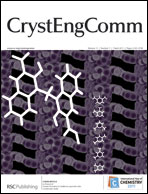Uncommon crystal motif of brucine in its diastereomeric salt with (11-oxo-11H-dibenzo[b,f][1,4]thiazepin-10-yl)-acetic acid: a case of possible crystallization-induced dynamic resolution†
Abstract
The paper reports on the molecular and crystal structure of the diastereomeric salt (4) formed by the (11-oxo-11H-dibenzo[b,f][1,4]thiazepin-10-yl)-acetate (H−12) and the brucinium resolving agent. Experimental evidences suggest that the salt was obtained by a crystallization-induced dynamic resolution of the tricyclic compound 2, which seems to constitute the first example of successful application of this technique to tricycles of this kind. A systematic comparison with already published structural data of compounds containing
![Graphical abstract: Uncommon crystal motif of brucine in its diastereomeric salt with (11-oxo-11H-dibenzo[b,f][1,4]thiazepin-10-yl)-acetic acid: a case of possible crystallization-induced dynamic resolution](/en/Image/Get?imageInfo.ImageType=GA&imageInfo.ImageIdentifier.ManuscriptID=C0CE00595A&imageInfo.ImageIdentifier.Year=2011)

 Please wait while we load your content...
Please wait while we load your content...